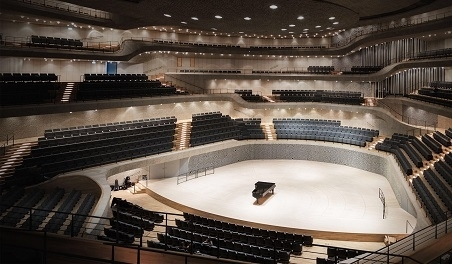The degree of sound absorption in the room designed for sound-absorbing acoustics in concert halls is expressed in terms of sound absorption or average sound absorption. When the wall, ceiling and other materials are different, and the sound absorption rate varies from place to place, the total sound absorption after the sum of the respective sound absorption power is divided by the value of the total area to express. The task of sound absorption in the sound insulation plan is to absorb noise so as not to affect other aspects. For example, when sound-absorbing materials are arranged around the noise source, the noise level can be reduced; or when sound-absorbing materials are used on the wall of the room, the noise level can be reduced. Noise intruding from outside. However, it should be noted that the sound insulation effect cannot be achieved when only sound-absorbing materials are used. For example, on the side where the window is opened, since it does not reflect the sound energy it encounters, the sound absorption rate is 100, that is, the surface is a sound-absorbing surface, but there may also be surfaces that cannot be soundproofed. When the sound absorption in the room is large, it can suppress the diffuse sound in the room and reduce the noise level. This method is effective when it is far away from the noise source and the point of influence, but if there are noise sources everywhere in the room and the distance to the point of influence is close, such as a window seat against the sound of window intrusion, because the direct influence of noise is too great , So the sound insulation effect produced by sound absorption will not be too significant.
The proscenium of sound-absorbing acoustic design in concert hall
The stage opening of the concert hall plays an important role in the early reflection of the front and middle seats of the pool seat in the hall. The reflection surface formed by the front side wall and the top plate of the proscenium should be designed for the reflected sound in the front middle area of the pool seat, which cannot be replaced by other interfaces in the hall.
Balustrades and boxes
Concert halls usually have to take into account the two forms of natural sound and sound reinforcement performance. The sound source is located in two different positions on the stage (natural sound) and the sound bridge on the upper stage (the speaker group of the sound reinforcement system), and the concert hall absorbs sound. The floor railings are usually concave arcs. The concert hall absorbs sound. Therefore, the fence should be designed for diffusion, and the form can adopt convex arc round noodles, triangles, cones, etc.
The ceiling under the seat.
The seats under the stairs are usually far away from the stage. In order to obtain a uniform sound field distribution, under the conditions of natural sound performance, the blossoms should play a role in enhancing the sound intensity of the back seats; when the sound reinforcement is used, the ceiling should use the speaker group The voice smoothly entered the space under the seat.
The back wall of the music venue
The decoration of the back wall of the concert hall should be determined according to the function of the hall and the way of performance. For concert halls and opera houses with natural sound performances, the back wall should be treated with sound reflection and diffusion, and for halls with sound reinforcement systems, sound-absorbing structures can be used, and at the same time, it is necessary to prevent the generation of echoes and the decoration of the speaker group. Music venue speaker group The finish structure must meet the requirements of both sound transmission and aesthetics.
(1) The finish structure must have as large a sound transmission rate as possible, not less than 50%;
(2) The lining horn cloth should be as thin as possible so as not to affect the output of high-frequency sound;
(3) The structure must have sufficient rigidity so as not to cause resonance.
(4) When using wooden grille finishes, the width of the wooden strips should not be greater than 50mm, so as not to block the output of high-frequency sound
Post time: Dec-31-2021





